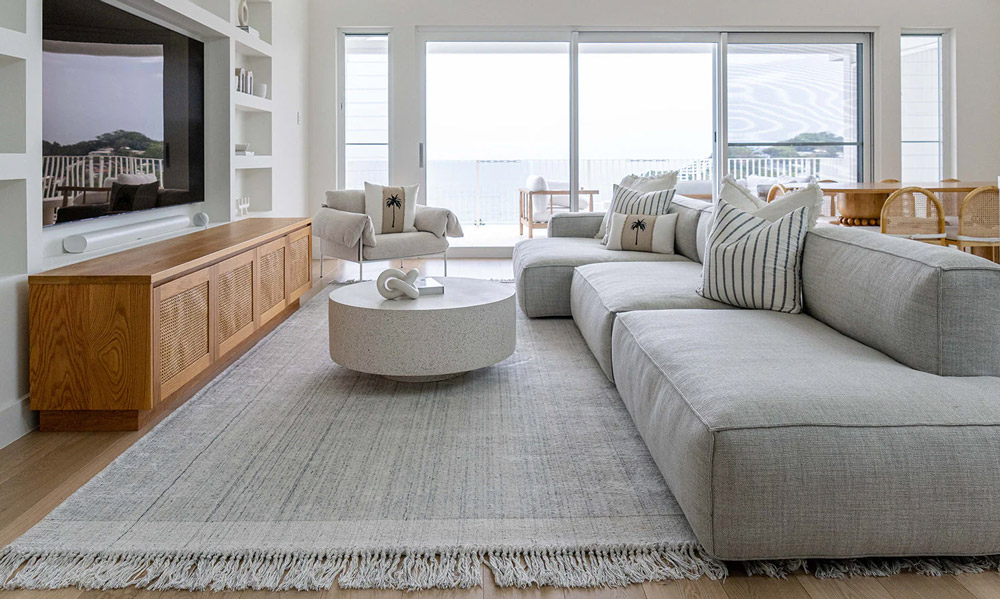Choosing the right rug size can dramatically improve the look and feel of any room. It’s not just about finding a rug you love — it’s about ensuring the rug enhances your space rather than overwhelms it or gets lost within it. A rug can anchor furniture, define a space, and bring cohesion to your interior design. But when it’s the wrong size, even the most stylish rug can look awkward or out of place.
This guide walks you through the principles of rug sizing, room-by-room recommendations, common mistakes to avoid, and practical tips to help you confidently choose the right rug for any room in your home.
Contents
Why Rug Size Matters
Rugs do more than cover floors — they define spaces. In open-plan homes or large rooms, a rug can help create a clear visual boundary for seating areas, dining spaces, or sleeping zones. Properly sized rugs enhance spatial perception, making small rooms feel more expansive or large rooms feel cozier and more inviting.
When a rug is too small, furniture can feel disconnected, making the layout look disjointed. Oversized rugs, on the other hand, can overwhelm a room or encroach on walkways, throwing off the room’s balance. Getting the dimensions right ensures both aesthetics and functionality.
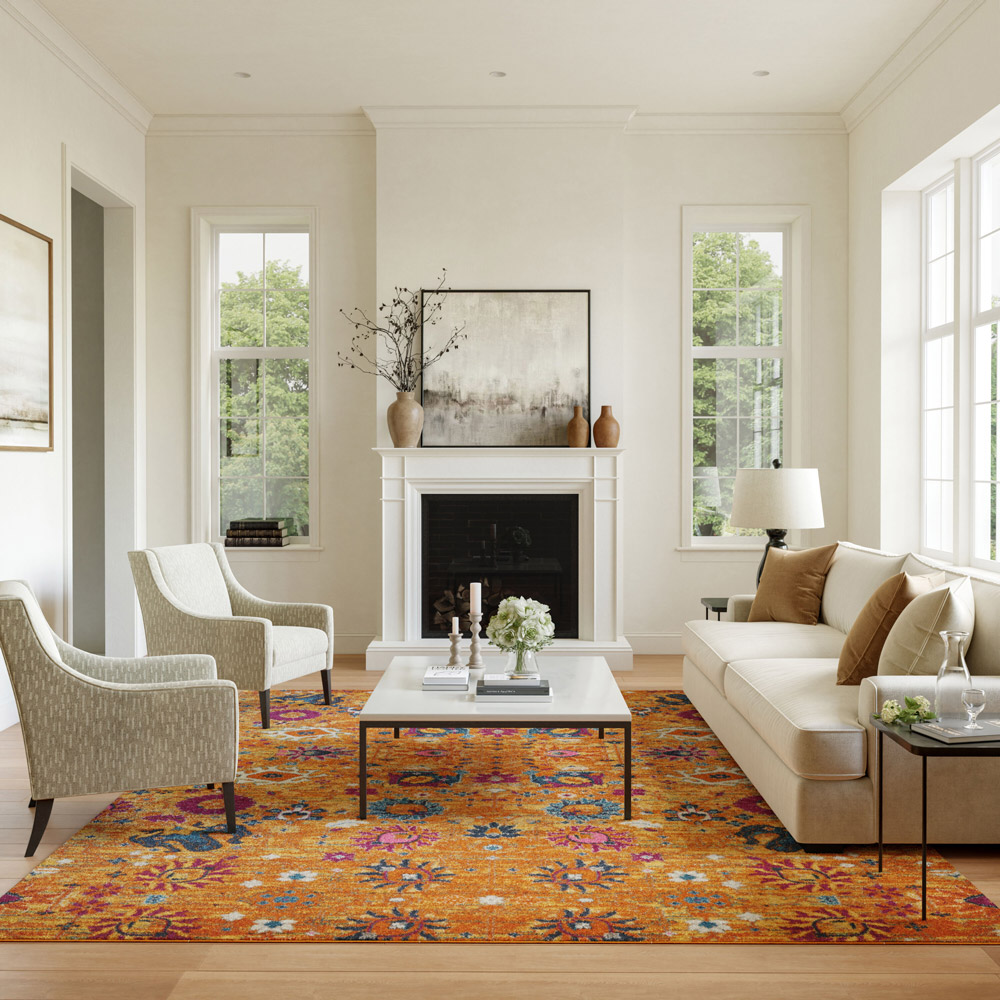
Common Rug Sizing Mistakes
One of the most frequent errors homeowners make is choosing a rug that’s too small. A small rug under a coffee table, with none of the surrounding furniture touching it, can make the space feel incomplete. Another mistake is forgetting to account for practical aspects like door clearance or furniture movement, especially in dining rooms where chairs need to slide in and out easily.
Inconsistency in furniture placement—where some pieces have legs on the rug while others don’t—can disrupt visual harmony. Additionally, skipping measurements or not considering room layout before buying can lead to ill-fitting choices.
General Rug Placement Guidelines
As a rule of thumb, always leave between 6 to 18 inches of bare floor between the rug’s edge and the room’s walls. This border helps frame the rug within the room without making the space look cramped.
Another essential principle: try to have all the major furniture pieces (like sofas or beds) touch the rug — either fully or at least with their front legs. This gives the layout a sense of connection and prevents the rug from “floating” in the middle of the floor.
Rug Size Guide by Room
Living Room
In a living room, the rug should unify your seating area. The ideal placement involves either:
- All furniture legs on the rug (for large rooms)
- Front legs of the sofa and chairs on the rug, with the back legs off (for medium rooms)
- Only a coffee table on the rug (for very small rooms, though not preferred)
Standard sizes like 8×10 or 9×12 work well in most living rooms, especially when the rug extends at least 8 to 12 inches beyond the sides of your sofa.
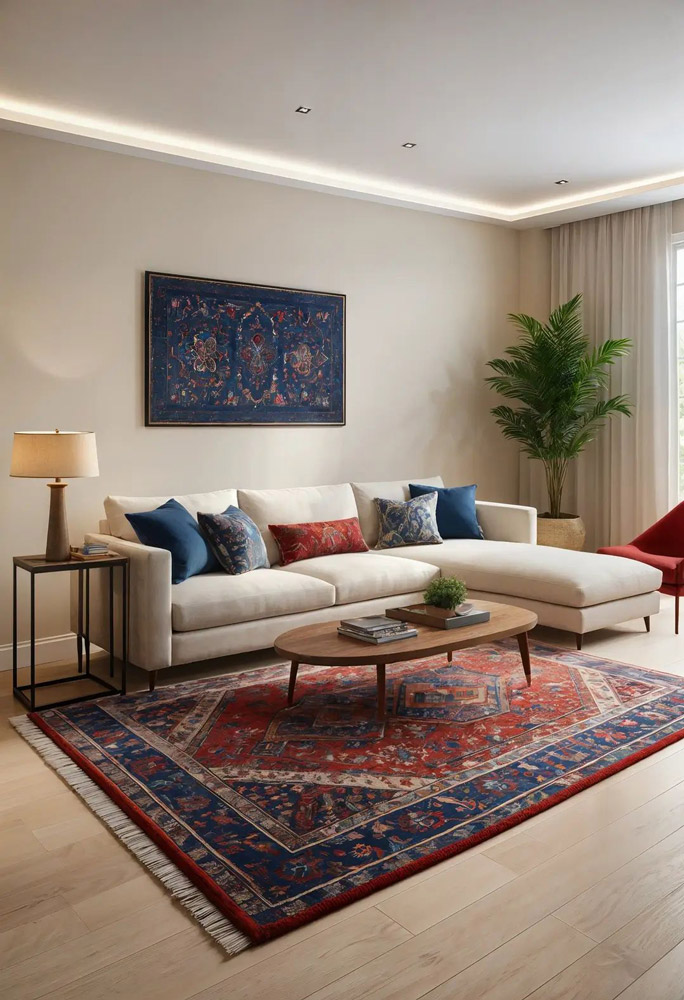
Dining Room
A dining room rug should always accommodate the table and chairs — even when the chairs are pulled out. This typically means extending the rug at least 24 inches beyond the edges of the table on all sides. An 8×10 or 9×12 rug usually works for most six- or eight-seat dining tables.
Avoid high-pile or thick rugs here, as they can interfere with chair movement. Opt for low-pile or flatweave materials that are easier to clean and maintain.
Bedroom
In a bedroom, rugs should offer comfort underfoot and visually balance the bed and nightstands. Placement options include:
- A large rug under the entire bed and nightstands
- A rug under the bed that stops just before the nightstands
- Two smaller runners on either side of the bed (for smaller rooms)
For queen beds, an 8×10 rug is ideal. For king beds, 9×12 provides the right proportions. Make sure the rug extends at least 18 to 24 inches from the foot and sides of the bed.
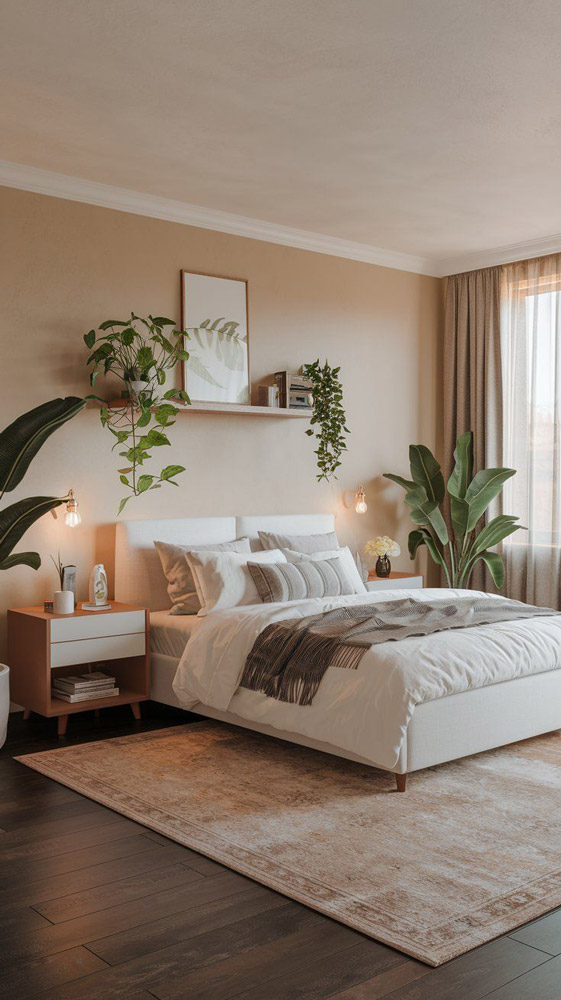
Hallways, Entryways, and Runners
In high-traffic areas like hallways or entryways, runners are your best option. Choose a rug width that allows for a few inches of visible flooring on either side (usually 3 to 6 inches). The runner should cover most of the hallway length without extending into doorways.
For entryways, pick a rug that leaves space around its edges and aligns well with the door swing. Entry rugs also set the tone for your home, so consider both form and function.
How to Measure and Visualize the Right Rug Size
Start by measuring your room’s dimensions and the footprint of the furniture. Note the layout — are the furnishings centered, floating, or pushed against a wall? Use painter’s tape to outline rug sizes directly on your floor. This allows you to visualize the scale and see how it interacts with furniture and walkways.
Also, consider clearance — ensure rugs don’t block door swings or impede traffic flow. In dining areas, factor in the extra space chairs need when pushed back.
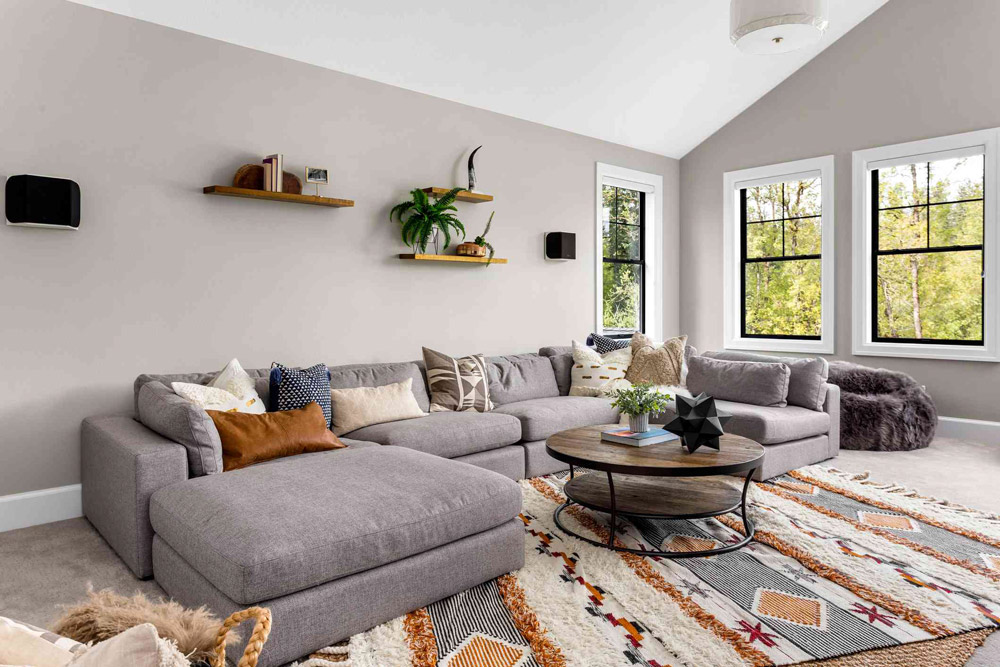
Beyond Size: Shape, Material, and Function
Rug shape matters too. Rectangular rugs are standard, but round rugs can soften a square room or work well under circular tables. Runners are best for narrow spaces.
Material also plays a role. Choose wool or synthetic blends for high-traffic areas. In bedrooms or living spaces where comfort is key, a plush or medium-pile rug may be appropriate. Avoid thick pile in dining rooms or entryways.
Small Room vs Large Room Strategies
In small rooms, using a larger rug than expected can actually make the space feel bigger by unifying furniture and creating continuity. In large rooms, rugs help create “zones” — like separating a seating area from a reading nook or a dining area from a kitchen in an open-concept layout.
Using multiple rugs of the right sizes can also help define spaces and prevent a cavernous look.
Rug Layering and Styling Tips
Layering rugs can be both a style choice and a budget-friendly option. You might place a large, neutral flatweave rug as a base, then layer a smaller, textured or patterned rug on top to add visual interest.
When mixing patterns or textures, keep the color palette cohesive and vary the scale of designs — pair large-scale prints with smaller ones for balance.
Final Thoughts
Choosing the right rug size involves more than matching dimensions. It’s about understanding how furniture, space, and flow interact with the rug to create a harmonious environment. Measure carefully, think about placement, and consider function as well as form.
The right rug size can elevate your entire interior design and transform how a room feels. With a bit of planning, you can avoid the common pitfalls and make confident decisions that enhance both comfort and style in your home.

